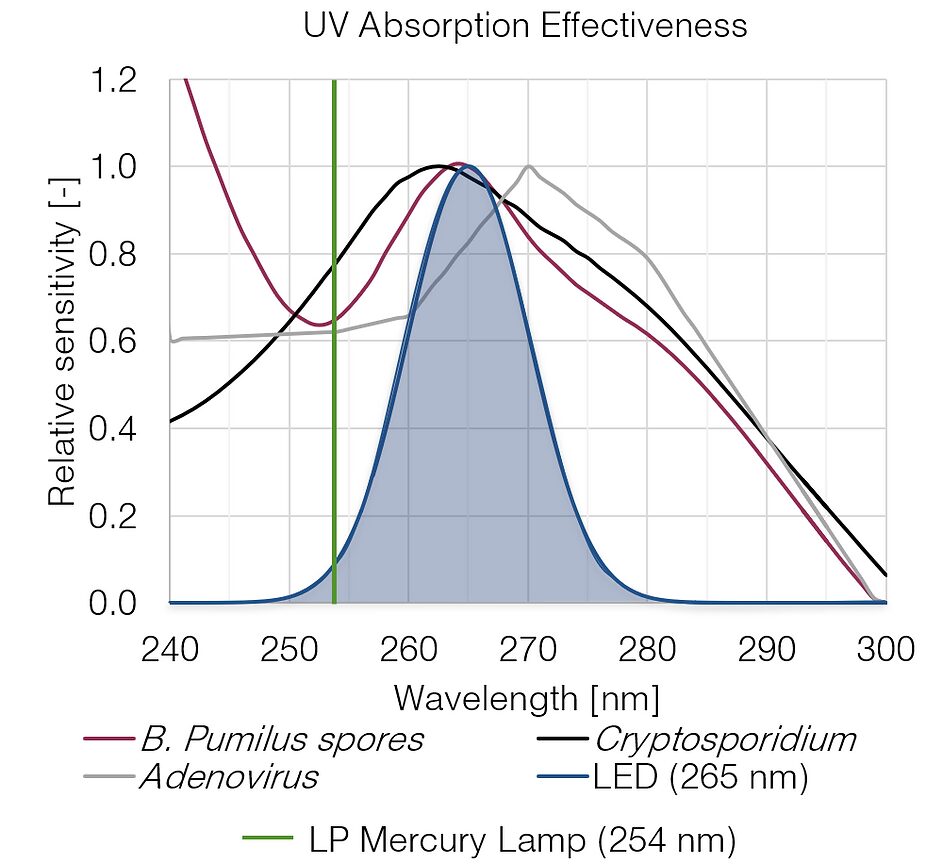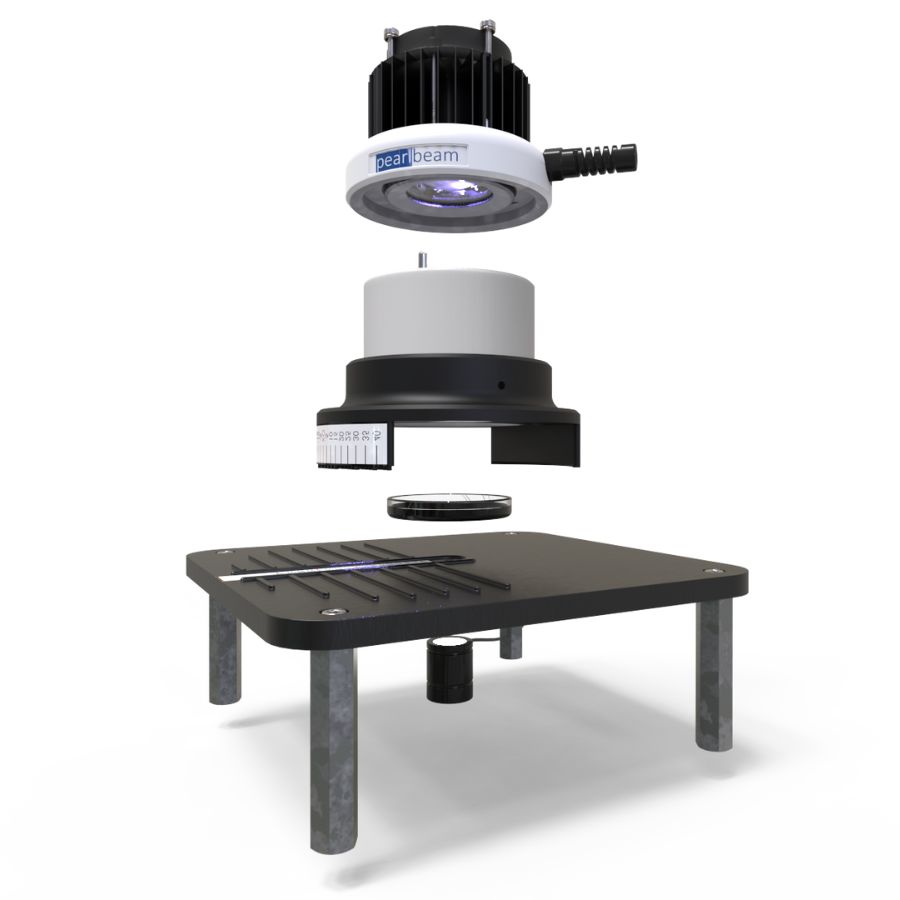UV-C LED Benefits
Enables the ability to select narrow band output wavelength to match peak absorption spectra of a target organism
Why wavelength section is important
With the popularity of low-pressure mercury lamps, 254 nanometers (nm) have been thought of as the ideal wavelength for disinfection, even though the peak germicidal effectiveness falls between 260 and 270 nm, depending on the specific pathogen.
UV-C LEDs are quasi-monochromatic, a majority of output falls within a 10-nm gap, but can be engineered in a variety of wavelengths within the germicidal range to target specific pathogens or the general peak pathogen UV sensitivity, such as 255, 265, 275 nm, etc.
The choice of wavelength is usually dependent upon multiple factors which may include:
- UV-C LED Cost – Although rapid advances in UV-C LED manufacturing and increasing volumes are steadily driving down prices, the manufacturing cost of UV-C LED devices varies by wavelength
- UV-C LED Lifetime – Current best-in-class devices have a lifetime of 10,000 hours with 70% of initial output (L70), however, there is a high degree of variability between LED device manufacturers’ specifications related to lifetime at different wavelength values
- UV Optical Output – The output power of a UV-C LED device varies based on wavelength. Current best-in-class devices deliver optical output values up to 100 mW Target Organism Action Spectra – Pathogens have different spectral sensitivity for different UV wavelengths
- UV Transmittance – The UV transmittance of the fluid being treated is a critical parameter for sizing UV systems. Different water UV-Transmittance values have different absorbance characteristics that must be accounted for.
The most effective solution often lies at the intersection of many of the above factors and the most effective germicidal wavelength is not always the correction application wavelength. Our extensive knowledge of disinfection products and applications allows AquiSense Technologies to provide the most optimal solution for balancing all of these factors.










